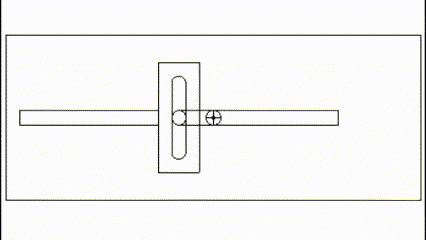It all started with this question.
There are three different ways to solve this but one way is using kepler's second law. $\frac{dA}{dt}=\frac{L}{2m}.$ This applies because angular momentum is conserved about the origin since net net torque about that point is zero. So this turns into basic integration problem. $\int_0^AdA\,= \frac{L}{2m}\int_0^T\,dt$. Where $T$ is the time period. Time period happens to be $2\pi \sqrt{\frac{m}{k}}$. And writing $L$ as $m\frac{J}{m}A$ we get option D to be right. The only part that bugs me is that why is time period still the same. If you look at the derivation for time period we solve that SHM differential equation, now if you add this motion in $y$-axis doesn't this mess everything up. What is the derivation vectorially or whatever for time period to be same. Is there some general prinicple I am missing?


